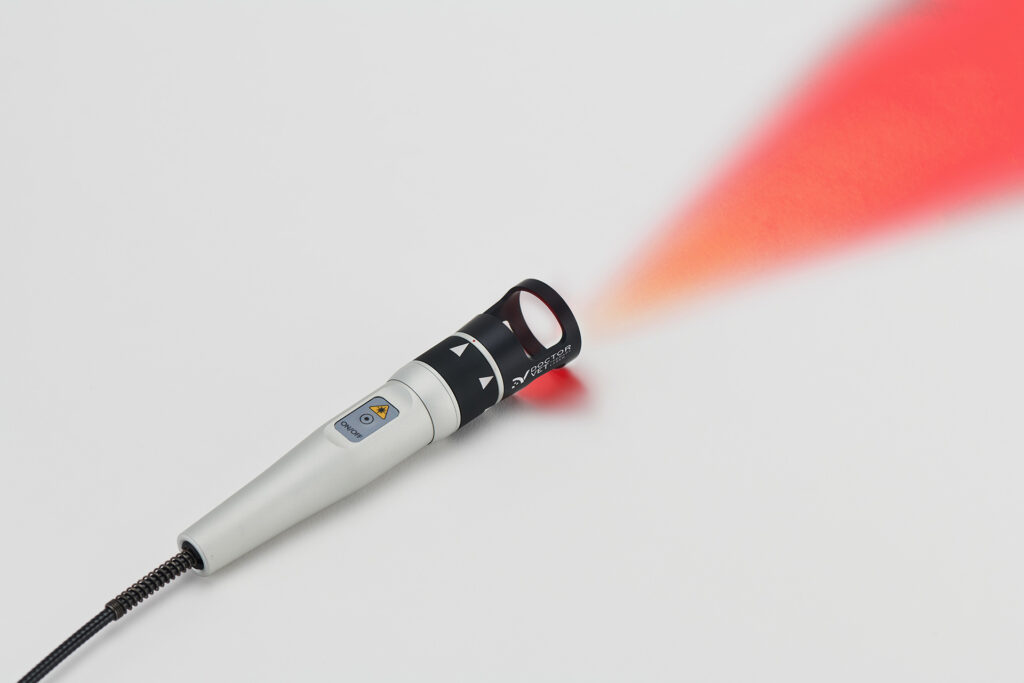
Tendinopathies and suspensory ligament desmitis in horses account for 31% of all lesions occurring in this species1.
Depending on the seriousness and chronic nature of the lesion, they impact a return to normality in the patient and often lead to a delay to the return to athletic activity or an early retirement of the athlete2.
Numerous treatments exist to resolve this problem, such as rehabilitation, surgery, anti-inflammatory drugs, corticosteroids, β-aminopropionitrile fumarate, glycosaminoglycans, platelet-rich plasma (PRP), stem cells and shockwaves3-5.
Laser therapy has shown itself to be useful in numerous studies – both laboratory studies and human studies – of tendinopathies and ligament problems due to its stimulation of fibroblasts, which leads to an increase in collagen production, improved organisation of these collagen fibres, greater strength in these tendons, increased microcirculation, and a reduction in COX-2 and pro-inflammatory mediators6.7.
In the study conducted by Fung et al8 they studied the effects of laser therapy in rats (including a total of 24 specimens), creating a lesion in the medial collateral ligament. 16 rats were included in the group treated with laser and 8 in the control group, applying a single laser session. They observed an improvement in the biomechanical properties of the injured ligament in the group treated with laser therapy when compared with the control group.
In humans, this has been studied in seven patients with a bilateral lesion of the common calcaneal tendon. The authors concluded that the laser improved the pain and inflammation symptoms (they also studied how prostaglandin levels were reduced)9.
Pluim et al have presented important studies in this field in horses. The first, published in 201810, included 150 sport horses diagnosed with tendinopathy or desmopathy (the examination included a clinical gait analysis and ultrasound scan). The horses included in the study were treated once per day over two consecutive weeks. Treatments were applied with laser or in combination with other therapies.
Seeing is believing!
Book a demo now to learn how DoctorVet works!
One of the results they obtained was an improvement in the horses only treated with laser when compared with those subject to a combined treatment (considering that this is due to the inflammation caused as a result of the infiltration). Another result they obtained was an improvement in the symptomatology and a reduction in the percentage of relapses when compared with other treatments.
The other study conducted by Dr. Pluim et al11 took place in a controlled manner on the suspensory ligament in six horses. They performed assessments using ultrasound and magnetic resonance. They applied laser therapy using a protocol that included different frequencies, treating once a day over four weeks. In the cross-section ultrasound scan, they observed that the lesion was much smaller in those horses treated with laser and the Doppler signal was stronger during the period of treatment than in those horses in the control group. In the magnetic resonance (MRI), they also observed that the lesions were small in those treated with laser therapy.
Given the importance of these pathologies, DoctorVet has created specific protocols for tendinopathies. Depending on the chronic nature of the process, the acute or chronic tendinopathy protocol can be selected and combined with the inflammation protocol. We recommend daily treatment to guarantee a correct photobiomodulation effect, as well as to perform reviews using ultrasound and observe any improvement in the symptoms in order to spread the sessions further apart.

Via dell’Impresa, 1
36040 Brendola (VI)
VAT 02558810244
C.R. VI 240226
© Copyright 2016-2021 LAMBDA S.p.A. | Privacy Policy